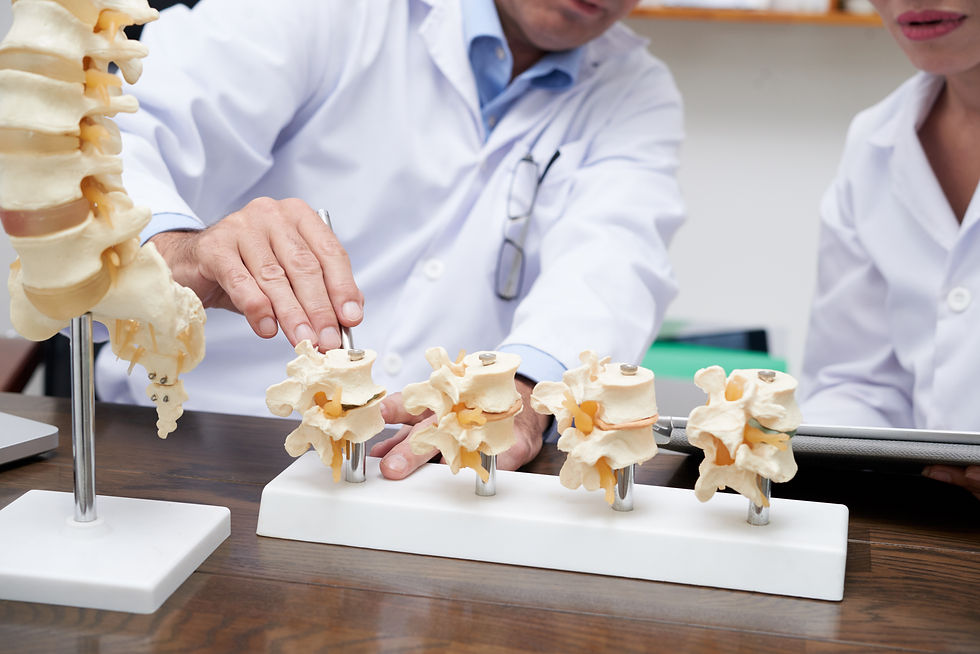Exercise and Medicine 3.0: The Future of Health Optimisation
- Jordan Pollard

- Apr 1
- 5 min read

In the evolving landscape of healthcare, Medicine 3.0 represents a fundamental shift from reactive treatment to proactive health optimisation. This new paradigm prioritises prevention, early intervention, and personalisation—leveraging technology, data, and lifestyle changes to mitigate disease risks before they manifest. One of the most powerful tools in this proactive approach? Exercise.
What is Medicine 3.0?
Healthcare has undergone significant evolution over time, and we are now at the dawn of a new era: Medicine 3.0. This paradigm, championed by thought leaders like Dr. Peter Attia, represents a shift from a reactive, disease-treatment model to a proactive, personalised, and preventive approach to health.
At its core, Medicine 3.0 focuses on optimising health long before disease takes hold. It leverages cutting-edge technology, deep data analysis, and a more nuanced understanding of chronic disease progression to identify risks early and intervene proactively. Unlike the traditional approach of waiting until symptoms appear, Medicine 3.0 empowers individuals to take charge of their health trajectory, actively mitigating potential threats before they manifest.
This new framework utilises tools such as:
Genetic analysis to determine predispositions to chronic diseases.
Biomarkers and continuous monitoring to track health trends over time.
Lifestyle interventions such as personalised nutrition, exercise, and sleep optimisation to enhance longevity and reduce disease risk.
Medicine 3.0 moves beyond just treating illness—it prioritises longevity, healthspan (not just lifespan), and quality of life, allowing individuals to live younger for longer.
Medicine 2.0 vs. Medicine 3.0: What’s the Difference?
To fully appreciate the impact of Medicine 3.0, it's essential to understand how it differs from Medicine 2.0, the dominant healthcare model in much of the world today.
Medicine 2.0: The Traditional Model
Medicine 2.0 has been highly effective at treating acute illnesses and injuries, excelling in areas such as:
Infectious disease control (e.g., antibiotics, vaccines, antivirals).
Emergency interventions (e.g., trauma surgery, cardiac stents, chemotherapy).
Pharmaceutical advancements have improved survival rates for chronic conditions.
However, its biggest limitation is that it is reactive rather than proactive. Medicine 2.0 operates on a "wait-until-it's-broken" model, addressing health problems only after they have become serious enough to require medical intervention.
Medicine 3.0: The Evolution of Healthcare
While Medicine 2.0 saves lives in emergencies, it is not well-equipped to combat chronic diseases, which develop gradually over decades. Medicine 3.0 shifts the focus toward early risk assessment, prevention, and individualised health strategies by:
Identifying risk factors before disease occurs (e.g., tracking insulin resistance before diabetes develops).
Leveraging data from wearables and biomarkers to guide daily health decisions.
Focusing on lifestyle interventions like exercise, nutrition, and sleep to modify disease risk.
In short, Medicine 2.0 is about treating disease, while Medicine 3.0 is about preventing it.
What Medicine 2.0 and 3.0 Have in Common
Despite their differences, Medicine 2.0 and Medicine 3.0 share fundamental principles that remain crucial to modern healthcare:
Scientific Rigor: Both approaches rely on evidence-based medicine and rigorous clinical research to inform best practices.
Use of Technology: While Medicine 3.0 expands technological applications, Medicine 2.0 has also benefited from innovations like imaging, diagnostics, and surgical advancements.
Medical Interventions When Necessary: Medicine 3.0 does not dismiss traditional medical treatments but instead aims to reduce dependence on them by preventing disease in the first place.
Medicine 3.0 builds upon the strengths of Medicine 2.0, incorporating a proactive mindset to complement traditional treatment strategies.
The Role of Exercise in Medicine 3.0
Exercise is not just about fitness or aesthetics; it is a cornerstone of long-term health and disease prevention. While Medicine 2.0 has largely focused on pharmaceuticals and surgical interventions after disease onset, Medicine 3.0 recognises that structured, intentional movement is one of the most potent, non-invasive tools to enhance longevity, compress morbidity, and optimise health trajectories.
1. Exercise as a Precision Tool for Disease Prevention
Medicine 3.0 is rooted in personalisation—using genetics, biomarkers, and lifestyle data to tailor interventions. Exercise fits seamlessly into this model by directly influencing key health markers:
Cardiovascular Health: Regular physical activity improves endothelial function, reduces blood pressure, and optimises lipid profiles, significantly lowering the risk of heart disease decades before symptoms arise.
Metabolic Health: Exercise enhances insulin sensitivity, combats obesity, and reduces Type 2 diabetes risk by regulating blood sugar levels more effectively than many medications.
Cognitive Longevity: Physical activity stimulates brain-derived neurotrophic factor (BDNF), reducing the risk of neurodegenerative diseases like Alzheimer’s and dementia.
Cancer Risk Reduction: Research suggests that exercise modulates inflammation, enhances immune surveillance, and reduces risks for multiple cancers, particularly breast and colorectal cancer.
2. Strength Training as a Longevity Prescription
One of the most underappreciated aspects of longevity science is the role of muscle mass and strength in overall health. Medicine 3.0 emphasises the importance of maintaining muscle as a biomarker of aging, and strength training is an indispensable part of this equation:
Higher muscle mass is correlated with lower all-cause mortality
Resistance training improves metabolic flexibility, increasing the body’s ability to use carbohydrates and fats efficiently for energy
Muscle is an organ of longevity, playing a critical role in glucose disposal, inflammation regulation, and overall functional independence
3. Personalized Exercise for Individual Risk Profiles
Medicine 3.0 thrives on personalisation, and exercise should be no exception. The future of health optimisation includes:
Genetic insights into exercise response (e.g., aerobic vs. strength predisposition)
Wearable tech & biometrics to track recovery, HRV (heart rate variability), VO2 max, and inflammation markers
Lifestyle-integrated movement, where daily activity is tailored to specific longevity goals rather than arbitrary fitness standards
The Future: Exercise as the First Line of Defense
Medicine 3.0 doesn’t reject traditional medicine—it enhances it by integrating preventive strategies that shift the focus from treatment to proactive health management. Exercise is not merely an optional lifestyle choice; it is a foundational pillar of this movement.
Imagine a future where your health plan is not just an annual check-up, but a continuous, dynamic process informed by real-time data, guiding you toward precise, exercise-driven interventions that mitigate disease risks before they ever take root. That’s the promise of Medicine 3.0—and exercise is at its core.
By embracing this approach, we move from a system designed to manage illness to one that cultivates optimal health and longevity. The choice is ours: react to disease once it appears or proactively shape our health trajectory through intentional movement. In the world of Medicine 3.0, exercise isn’t just an activity—it’s a prescription to live younger for longer.
Live Younger for Longer
If you're looking for expert guidance on optimising your health for longevity, my practice is dedicated to helping people move, feel, and live better for decades to come. Let’s start building your roadmap to 100 today!
Instagram: @pollardphysiology



Comments